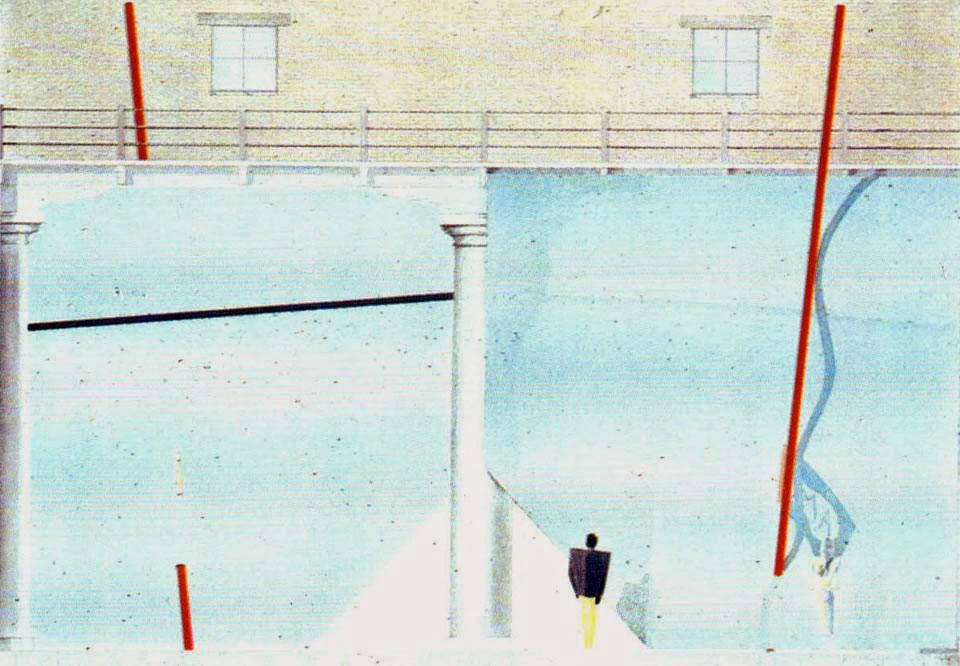El edificio del New York Times: delirio de dos siglos
Por Verónica Rosero y Enrique Ferreras
Publicado originalmente en el libro XXI Bienal Panamericana del Quito. Catálogo Académico. Colegio de Arquitectos del Ecuador.
Publicado originalmente en el libro XXI Bienal Panamericana del Quito. Catálogo Académico. Colegio de Arquitectos del Ecuador.
Cinco escalas de aproximación para el análisis arquitectónico.
Autores: N. Almeida, M. Lozada, A. Heredia, J. Valdivieso. Universidad Internacional SEK, 2018.
RESUMEN
The New York Times Building se inscribe en un contexto producto de la suma estratigráfica de aportaciones tanto teóricas como proyectuales, cuya acumulación perfiló lo que Koolhaas denominó el ‘manhattanismo’. El proyecto se inserta en la retícula de este paradigma cuyo proceso de consolidación ocurrió a lo largo del siglo XX entre utopías y realidades, y que en el siglo XXI va de la mano de nuevos hitos y delirios que configuran el pensamiento de la sociedad y la arquitectura de Nueva York. Arquitectónicamente, The New York Times Building enfatiza en parámetros cualitativos basados fundamentalmente en la transparencia para optimizar la experiencia laboral y las relaciones interior-espacio público, así como aportar a la noción de seguridad, cuestión fundamental tras el 11-S. La imbricación entre estructura y arquitectura se manifiesta claramente, observándose una unidad e influencia recíproca entre ambos elementos.
Esta arquitectura tectónica apuesta por la ligereza, la luz y el vacío. Así, The New York Times Building constituye una evolución del rascacielos americano a través de un “expresionismo tectónico” constante en la obra de Renzo Piano. Esta identidad silenciosa se adhiere al skyline de forma sutil pero cautiva. Complementariamente, las significaciones ideológicas del proyecto adquieren un impacto público (adicional a las relaciones entre arquitectura y poder) a través de la asociación de la arquitectura a una identidad corporativa: edificio y periódico se ligan de manera ineludible en el imaginario del habitante neoyorkino, como sucedió anteriormente con Times Square, aunque esta vez en una realidad ampliamente mediatizada.
ABSTRACT
The New York Times Building is part of a context resulting from the stratigraphic sum of both theoretical and projectual contributions, whose accumulation shaped what Koolhaas called 'Manhattanism'. The project is inserted in the grid of this paradigm whose process of consolidation occurred throughout the 20th century, between utopias and realities, and which in the 21st century goes hand in hand with new milestones and delusions that shape the thinking of society and New York architecture. Architecturally, The New York Times Building emphasizes qualitative parameters based fundamentally on transparency to optimize working experience and inner-public space relationship, as well as to contribute to the notion of security, a fundamental issue after 9/11. The overlap between structure and architecture is clearly manifested, observing a unity and reciprocal influence between both elements.
This tectonic architecture bets on lightness, light and emptiness. Thus, The New York Times Building constitutes an evolution of the American skyscraper through a "tectonic expressionism", a recurrence in the work of Renzo Piano. This silent identity adheres to the skyline in a subtle but captivating way. In addition, the ideological significance of the project acquires a public impact -additional to the relationships between architecture and power- through the association of architecture with a corporate identity: building and newspaper are inextricably linked in the imaginary of the New Yorker, as it was the case of Times Square, although, currently, in a reality widely mediated.




